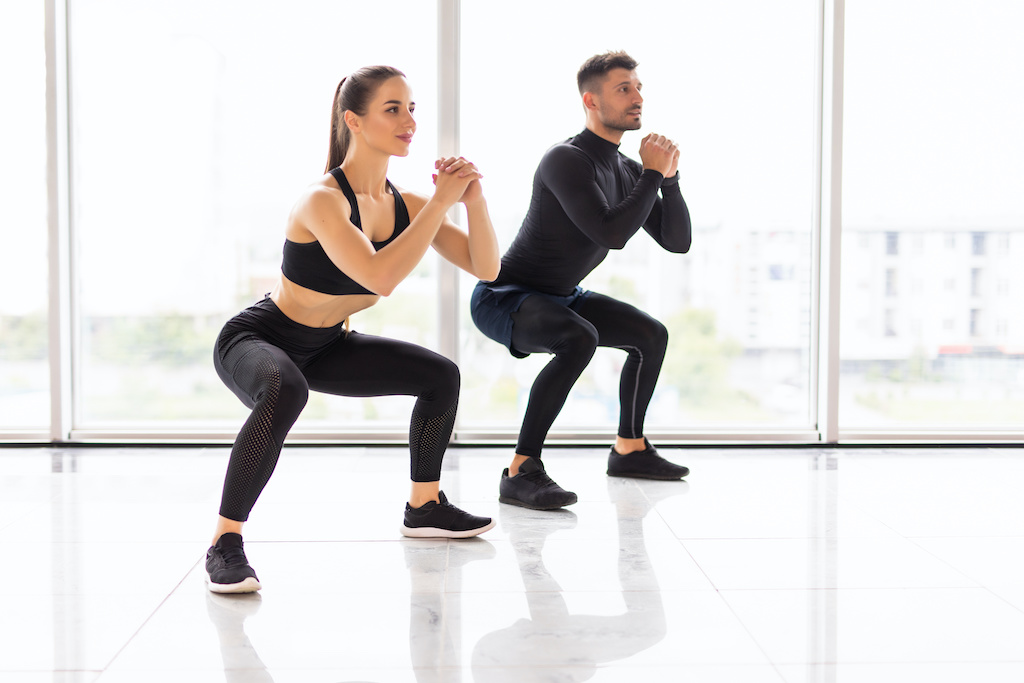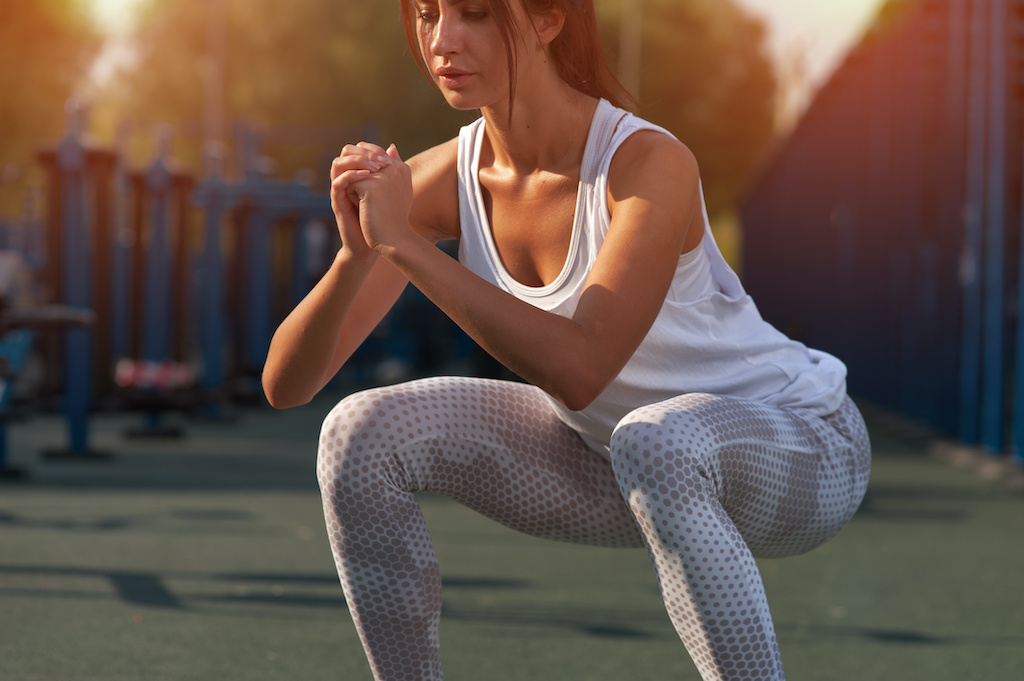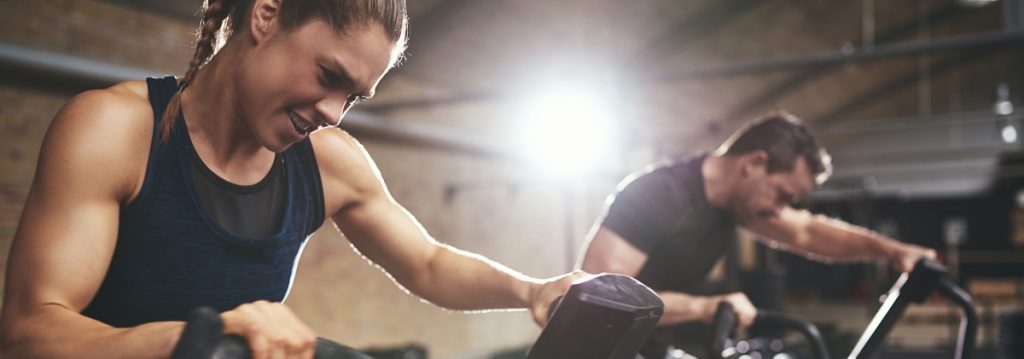Firstly, squats are muscle building exercises that are considered essential by many athletes. Learn the key actions and how to perform them well, and you will soon enjoy their benefits. By integrating squats with your sporting sessions, you will achieve a toned figure and work your lower body while preserving your back.
Why choose to do squats to build muscle?

Sometimes referred to as the king of strength training, the squat originally came from a basic movement performed by bodybuilders. Squats reproduce the bending of the knees that is needed to lift bars or dumbbells. They are repeated in a series of sets (without necessarily lifting a weight). This muscle building exercise works the quadriceps and, more generally, the lower body.
Do squats meet your goals?
If you are pursuing the following goals, then squats are for you:
- Improve the appearance of your lower body by working the muscles of the thighs and buttocks.
- Lose fat all over the body, especially around the thighs and buttocks.
- Improve your posture and develop a strong physique.
What advantages do squats offer?
The squat is a relatively simple strength training exercise to carry out. Once it has been fully mastered, it can be done anywhere without any equipment. Indeed, it will soon end up enriching your warm-ups, your HIIT sessions or your circuit training exercises. Session after session, you will empower your lower limbs, gain strength and balance and adopt a better posture every day while losing calories.
Building muscles: How do you do squats properly?

While squats are very effective strength training exercises, they must be done well to avoid any risk of injury and to obtain the desired effects. Do not hesitate to observe the postures adopted by a sports coach in an online video or via your virtual coaching app before you begin.
The step-by-step guide to squatting
To help you perform perfect squats, here is the exercise, broken down into simple steps:
- Stand with your feet slightly wider than hip-width and with your chest upright while looking straight ahead throughout the exercise.
- Stretching your arms out in front of you to balance yourself, bend your knees while tightening your abs and lowering yourself to a crouched position with your back straight.
- Breathe in as you drop as low as you can, ideally until your legs are bent 90 degrees or more if you don’t suffer from pain in your knees.
- While supporting yourself on your heels, straighten up as you exhale to return to your initial position.
- Start again!
What are the mistakes to avoid when doing squats?
As you exercise, keep the following points in mind so that you do your squats well and make no mistakes:
- Keep your head straight: Do not tilt it back or forward.
- Don’t move your knees any further than your toes.
- Keep the chest straight and at ease – only the lower part of the body should be under stress.
- Keep your heels off the ground, they’ll give you the leverage to push back to a vertical position.
Circuit training: Integrate squats into your workout

To build your workout, combine squats with other muscle building exercises to create a circuit training programme. Choose bodyweight exercises that work different muscle groups, such as crunches or push-ups.
Circuit training with squats for beginners
Here is an example of circuit training without equipment for beginner athletes:
- A short warm-up: Running on the spot, for example
- Jumping jacks
- Squats
- Pumping the knees
- Sit in a chair position (against a wall)
- Squats
- Planches
- Running on the spot, with high knees
Start for 30 seconds for each exercise, followed by 30 seconds of recovery time. This circuit training programme can be repeated 1, 2 or 3 times, depending on the time available and your physical condition, for a session of between 10 and 30 minutes.
Take it to the next level with intermediate-level circuit training
If you are in better condition, then this longer, more intense squat-focussed session will burn greater numbers of calories and you can also learn a few variations of the squat:
- A short warm-up: Running on the spot, for example
- Classic squats
- Jumping jacks
- Prisoner squats: Unlike classic squats, place your hands behind your head, staying well shielded so as not to arch your back too much
- Push-ups
- Jump squats: End with a vertical jump to increase the explosiveness of the exercise
- Crunches
- Squats with a dumbbell held with both hands, close to the chest (failing that, a bottle of water)
- Burpees
- Superman: A hyperextension of the back while laying on the ground
Again, you can build your circuit training on the basis of 30 seconds of effort for 30 seconds of recovery for each of the exercises while observing 2 minutes of rest between sets. This rhythm should be adapted according to your level and your objectives: Repeated 3 times, this circuit corresponds to approximately 30 to 40 minutes of exercise. Remember to hydrate yourself properly and to stretch after the session.
Check out our Fitness & Training page for more advice.
